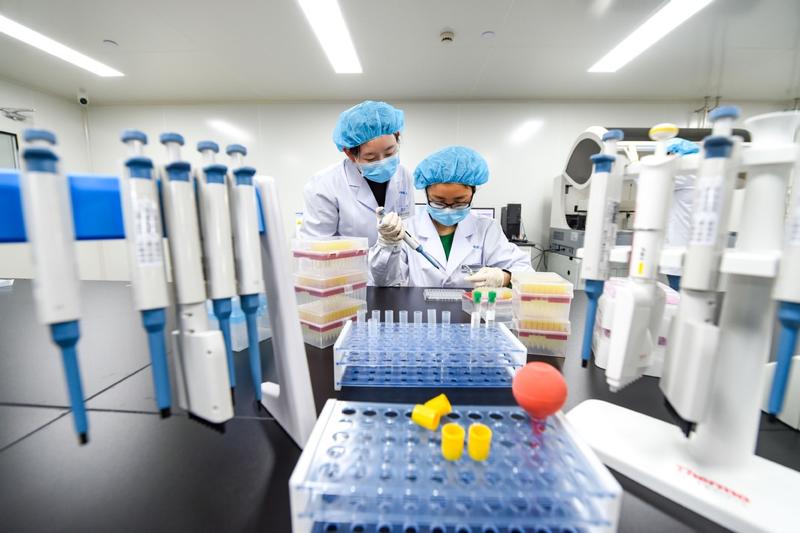 In this undated file photo, researchers from the Innovative Institute of Nanjing Oncoly Biomedical Technology conduct a biopharmaceutical experiment. (PHOTO PROVIDED TO CHINA DAILY)
In this undated file photo, researchers from the Innovative Institute of Nanjing Oncoly Biomedical Technology conduct a biopharmaceutical experiment. (PHOTO PROVIDED TO CHINA DAILY)
China has issued new standards for six types of human cells, allowing regulators, doctors and companies to better understand, evaluate and supervise related academic activities.
The standards, issued on Saturday, will also promote transparency, education and clinical translation of new technologies in the emerging fields of stem cell research and regenerative medicine.
Sun Yingpu, vice-president of the First Affiliated Hospital of Zhengzhou University, in Henan province
"These standards provide a greater scientific basis for policy execution to ensure that stem cell research and applications are done safely and effectively, so as to avoid doing harm to patients," she said.
The standards were published by the Chinese Society for Cell Biology and will take effect on April 9. The six types are human heart muscle cells, primary human liver cells, human mesenchymal stem cells, human hematopoietic stem/progenitor cells, human induced pluripotent stem cells and human retinal pigment epithelial cells.
Stem cells have the potential to develop into many different types of specialized cells in the body. For years, scientists have been trying to harness the therapeutic power of stem cells to repair damaged tissues and organs.
In an article published in Qiushi Journal on Tuesday, President Xi Jinping said regenerative medicine is one of the fields that represents the cutting edge of life sciences.
"The future of a nation, as well as people's livelihoods, have never been so profoundly influenced by science and technology as they are today," he said.
ALSO READ: Combining TCM, Western medicine effective against virus
Chen Yeguang, president of the Chinese Society for Cell Biology, said the standards will serve as the basis for future clinical translation of stem cell research and the formation of related laws and regulations.
Sun Yingpu, vice-president of the First Affiliated Hospital of Zhengzhou University, in Henan province, said stem cell therapy offers great promise for biomedicine, but since it is a relatively new technology, the lack of standards at home and abroad has led to many ethical and regulatory problems-from unrealistic marketing to the use of unproven therapies.
"These standards provide a greater scientific basis for policy execution to ensure that stem cell research and applications are done safely and effectively, so as to avoid doing harm to patients," she said.
"Only by having robust and effective regulations can we maximize the contribution of new stem cell products and technologies to building a healthy China."
Zhang Yu, an expert on stem cell therapy research, said it is fundamentally different from other molecular drugs because it is a form of "living medicine".
Therefore, evaluating its safety and efficacy involves more complex factors and rigorous standards, he said.
"The new guidelines are very instructive for stem cell drug developers, and they serve as a starting point for newer and more robust regulations in the future," Zhang said.
Xiang Peng, a professor at Sun Yat-sen University of Medical Sciences, in Guangdong province, said creating new standards is a meticulous process that needs to be strict, scientific, practical and open to exploration and future updates.
READ MORE: Chinese and Indonesian biotech firms in vaccine collaboration
"Sometimes defining a single word can take a long time, so the standards really are testimony to a consensus reached by scientists," he said. "As our understanding of stem cells deepens, we will need to keep optimizing our guidelines to meet new demands."


